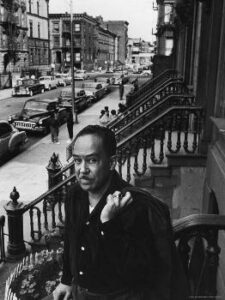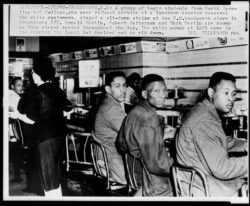Today in Black History: February 1st
1902 – Langston Hughes Born

Langston Hughes, born on February 1, 1902, in Joplin, Missouri, was a prominent figure in the Harlem Renaissance, a multifaceted artist known for his contributions to poetry, novels, and essays.
A key figure in the Harlem Renaissance, Hughes notable works include “The Weary Blues,” “Fine Clothes to the Jew,” and “Not Without Laughter.” Hughes settled in Harlem in the early 1940s, contributing significantly to literature and receiving honors like the Guggenheim Fellowship. He continued writing and encouraging younger artists until his death in Harlem on May 22, 1967, leaving a lasting legacy.
1960– Greenborro Sit-Ins Began

The Greensboro Sit-Ins, spanning from February 1 to July 25, 1960, were pivotal non-violent protests in Greensboro, North Carolina, marking the beginning of prominent sit-ins during the civil rights movement. The “Greensboro Four” — Ezell Blair Jr., David Richmond, Franklin McCain, and Joseph McNeil — students at North Carolina A&T College, drew inspiration from Mohandas Gandhi’s non-violent protest principles and early freedom rides by CORE in 1947.
Strategically planned, the protest aimed at desegregating Woolworth’s lunch counter, a symbol of racial segregation in the southern U.S. After months of persistence, Woolworth ended its segregation policy on July 25, 1960, as four Black employees became the first African Americans served at the lunch counter. The Greensboro Sit-Ins had a cascading impact, leading to similar protests nationwide and inspiring the formation of the Student Nonviolent Coordinating Committee (SNCC), a significant civil rights organization in the 1960s.


